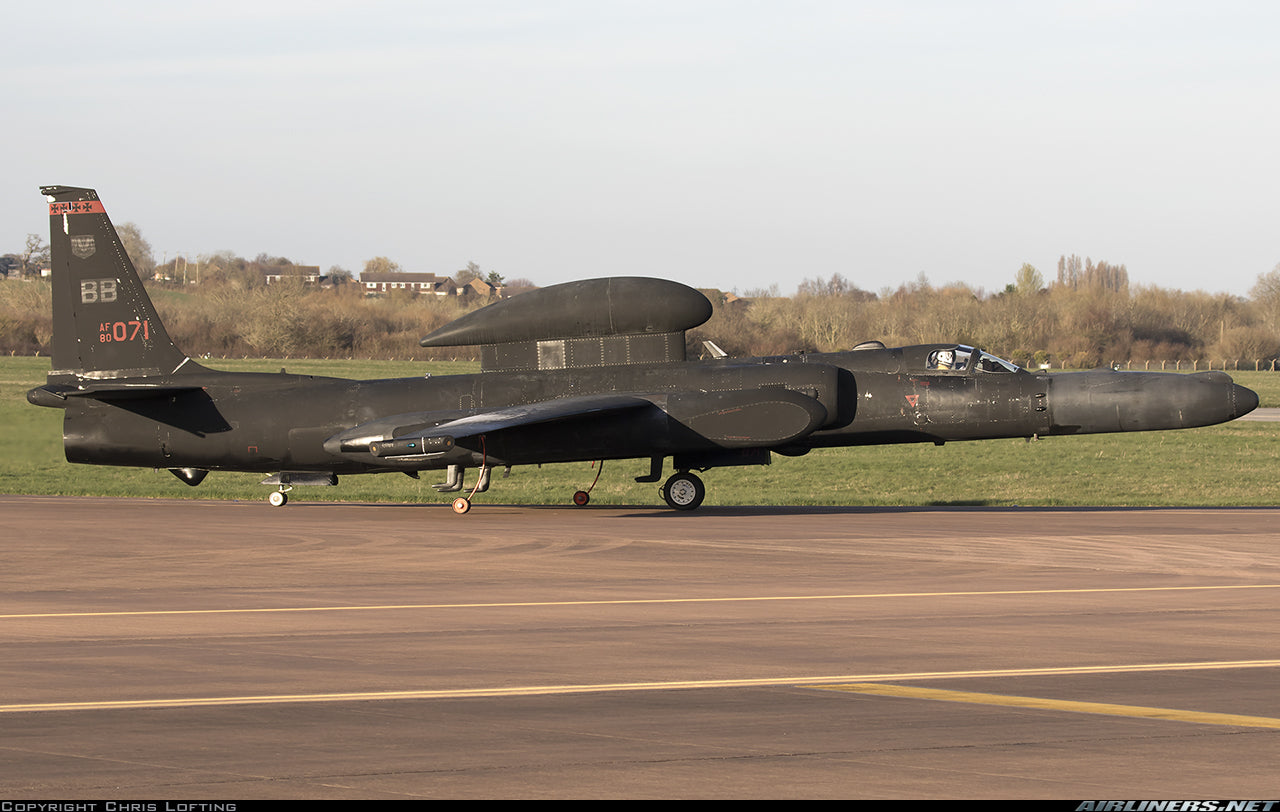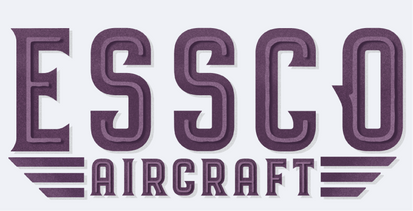
Number 40 of 100 in 100, the Lockheed U-2 “Dragon Lady”
Conceptualization:
The Lockheed U-2 was developed for Cold War-era intelligence needs. In the 1950s, the U.S. sought to gather high-altitude reconnaissance on the Soviet Union, which had become increasingly difficult using conventional aircraft. Traditional bombers repurposed for reconnaissance could not fly high enough to evade Soviet air defenses. This led to a demand for an aircraft capable of flying above 70,000 feet, beyond the reach of radar and anti-aircraft systems. Kelly Johnson, Lockheed's lead designer at Skunk Works, responded with a glider-like aircraft that could fly at extreme altitudes for extended periods, collecting critical intelligence. The U-2 addressed the pressing need for strategic surveillance during the Cold War, particularly concerning Soviet nuclear capabilities.
Original Design:
The original U-2 design was groundbreaking for its time, featuring long, glider-like wings that provided the necessary lift for high-altitude flight. The aircraft was lightweight, unarmed, and optimized for long-duration surveillance missions. Its single-engine configuration, pressurized cockpit, and ability to carry sophisticated cameras allowed it to reach altitudes above 70,000 feet. The unique bicycle landing gear, combined with a minimal structure, made takeoff and landing particularly difficult. Despite these challenges, the U-2 was capable of staying aloft for up to 10 hours, gathering critical intelligence while evading enemy defenses due to its altitude.

Photo Credit: lockheedmartin.com
Principal Designer:
The Lockheed U-2 was designed by Clarence "Kelly" Johnson, a prominent figure in aviation design and head of Lockheed’s Skunk Works division. Johnson had previously designed successful aircraft such as the P-38 Lightning and the Constellation, and he was known for his innovative yet practical approach to aircraft development. After the U-2, Johnson and his team at Skunk Works would go on to design other iconic aircraft, including the SR-71 Blackbird and the F-104 Starfighter. Johnson's ability to lead small, highly focused teams allowed the U-2 project to be completed quickly and effectively, setting a standard for future aerospace development.
Production Run:
Production of the U-2 began in 1955, with 48 units built initially for CIA and U.S. Air Force missions. The aircraft saw several production runs over the years, key variants like the U-2R and the TR-1 were built to improve range, payload capacity, and mission flexibility. By the early 1990s, the U-2S was introduced, featuring modern avionics and new engines. In total, around 104 U-2s were built before production ended in 1989, although existing aircraft continue to be upgraded and remain in service today.
Evolution:
The Lockheed U-2 has undergone significant evolution since its introduction in 1955. Early models like the U-2A were upgraded to improve engine performance and sensor capabilities, while the U-2R introduced a larger airframe and more advanced equipment. The TR-1 offered specialized tactical reconnaissance capabilities. By the 1990s, the U-2S emerged with major upgrades, including a new engine and modern avionics, allowing the aircraft to remain operational in the 21st century. Each iteration improved the U-2's endurance, altitude performance, and intelligence-gathering capabilities, keeping it relevant across decades.

Photo Credit: airliners.net - Esa Kaihlanen
Specifications:
General characteristics
- Crew: 1
- Capacity: 5,000 lb (2,300 kg) payload
- Length: 63 ft 0 in (19.20 m)
- Wingspan: 103 ft (31 m)
- Height: 16 ft 0 in (4.88 m)
- Wing area: 1,000 sq ft (93 m2)
- Airfoil: root: NACA 63A409; tip: NACA 63A406
- Empty weight: 16,000 lb (7,257 kg)
- Max takeoff weight: 40,000 lb (18,144 kg)
- Fuel capacity: 2,950 US gal (2,460 imp gal; 11,200 L)
- Powerplant: 1 × General Electric F118-101 turbofan engine, 17,000 lbf (76 kN) thrust
Performance
- Cruise speed: Mach 0.715 (412 kn; 470 mph; 760 km/h) at 72,000 ft (22,000 m)
- Cruise speed: 413 kn (475 mph, 765 km/h) at 65,000 ft (20,000 m)
- Stall speed: 65 kn (75 mph, 120 km/h)
- Range: 6,090 nmi (7,010 mi, 11,280 km) plus
- Endurance: 12 hours
- Service ceiling: 80,000 ft (24,000 m) plus
- Rate of climb: 9,000 ft/min (46 m/s)
- Time to altitude: 60,000 ft (18,000 m) in 12 minutes 30 seconds
- Lift-to-drag: 25.6
- Wing loading: 40 lb/sq ft (200 kg/m2)
- Thrust/weight: 0.425
- Fuel consumption: 910 lb/h (410 kg/h) in cruise
Comparison to Other Aircraft in Its Class:
The U-2S excels in high-altitude reconnaissance, operating at altitudes up to 70,000 feet, surpassing modern platforms like the RQ-4 Global Hawk, which typically flies around 60,000 feet. While the Global Hawk has a longer range (14,200 miles), the U-2 offers greater flexibility with its modular payload system, allowing it to be reconfigured for a variety of intelligence, surveillance, and reconnaissance (ISR) roles. Unlike the SR-71 Blackbird, which relied on speed (Mach 3+) to outrun threats, the U-2 depends on altitude and electronic countermeasures. Although the U-2 still requires a pilot, which adds some operational risks, the human factor allows for immediate adaptability during complex missions. Despite its age, the U-2 remains a vital, flexible platform for long-duration surveillance missions.
Performance:
Lockheed U-2S Dragon Lady Performance Envelope:
V-Speeds:
- V_NE (Never Exceed Speed): 240 knots (276 mph)
- V_A (Maneuvering Speed): 140 knots (161 mph) – varies based on aircraft weight
- V_S1 (Stall Speed in Clean Configuration): 75 knots (86 mph) – without flaps, gear up
- V_S0 (Stall Speed in Landing Configuration): 70 knots (80 mph) – with flaps down
- V_REF (Approach Speed): 85-90 knots (98-104 mph) – during final approach for landing
- V_FE (Maximum Flap Extended Speed): 100 knots (115 mph)
G-Load Limitations:
- Positive G-Limit: +2.5 Gs
- Negative G-Limit: -0.5 Gs
The U-2’s design prioritizes high-altitude endurance over agility, limiting its G-load tolerance and making it unsuitable for sharp turns or aggressive maneuvers. It excels in straight-and-level flight and shallow turns but struggles with steep turns due to its long wingspan. Climbing to altitudes over 70,000 feet is smooth but landing is notoriously difficult, often requiring assistance from chase cars due to its sensitive handling and narrow landing gear. Training for U-2 pilots is rigorous, focusing on managing long-duration missions, precise control at high altitudes, and mastering challenging takeoff and landing procedures. Its "coffin corner" flight envelope at high altitude demands exact piloting to avoid stalling or over speeding, and its responsive controls require great precision, particularly during landings.

Photo Credit: airliners.net - Michael Buckle
Safety Record:
The U-2 has had a mixed safety record, with numerous accidents attributed to its challenging takeoff and landing characteristics, narrow high-altitude operating envelope, and pilot fatigue during long missions. Notable incidents include the 1960 shootdown of Francis Gary Powers over the Soviet Union and various crashes due to landing mishaps or engine failures. Compared to other high-altitude reconnaissance aircraft, the U-2 has a higher accident rate but continues to be flown thanks to modern upgrades and improved pilot training. Its safety concerns are largely due to the aircraft's unique flight profile and mission demands.
Acquisition Cost:
When first introduced in the 1950s, the U-2 cost approximately $1 million per unit, a significant investment at the time. Today, the modernized U-2S is estimated to cost between $50 million and $70 million, reflecting the advanced sensor packages, avionics upgrades, and engine improvements added over the decades. While this makes the U-2S more expensive than its original version, it remains cost-effective compared to other reconnaissance platforms, like drones, that perform similar intelligence-gathering missions but often require more specialized support systems.
Conclusion:
The Lockheed U-2, originally conceived during the Cold War, has evolved into one of the most iconic and enduring reconnaissance aircraft in history. Designed to operate at altitudes exceeding 70,000 feet, the U-2 was a critical tool for gathering intelligence, avoiding detection, and supporting national security efforts. From its early successes during the Cold War to its modern-day upgrades, the U-2’s high-altitude capabilities, extensive sensor suite, and flexible mission profiles have ensured its relevance across decades of service. While the aircraft presents unique challenges in terms of flight operations and safety, it remains unmatched in its ability to perform critical surveillance missions. The U-2’s continued modernization, including sensor enhancements and avionics upgrades, highlights its enduring value in an ever-changing technological and geopolitical landscape.

Photo Credit: airliners.net - Michael J. Freer
Bibliography:
Lockheed Martin – U-2 “Dragon Lady”
U.S. Air Force – U-2S/TU-2S Fact Sheet
NASA U-2 High-Altitude Research
Wikipedia – Lockheed U-2
